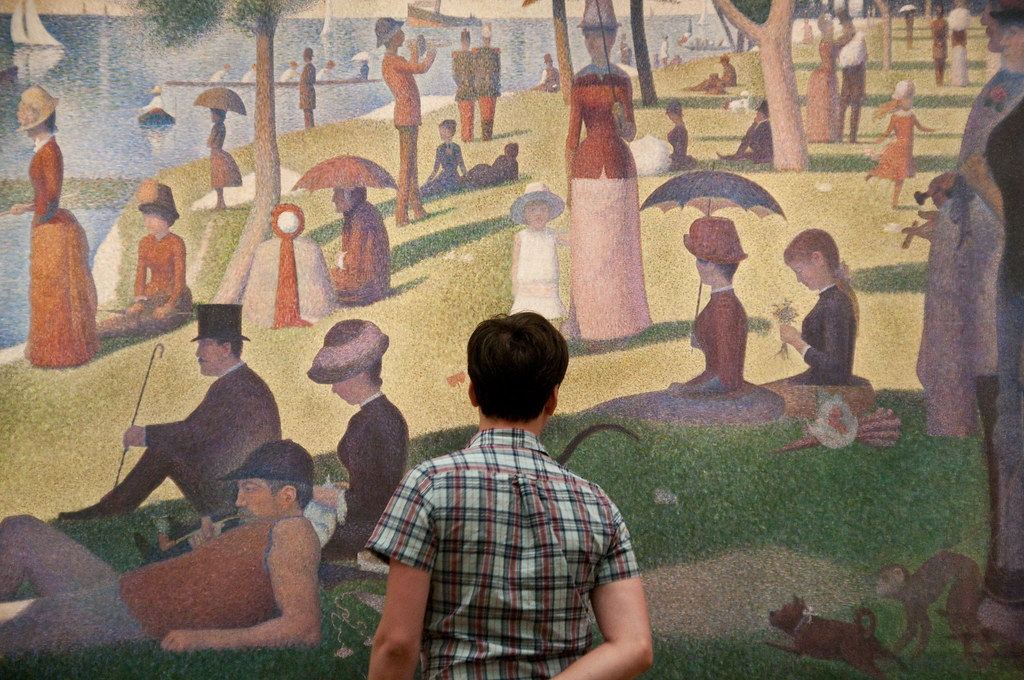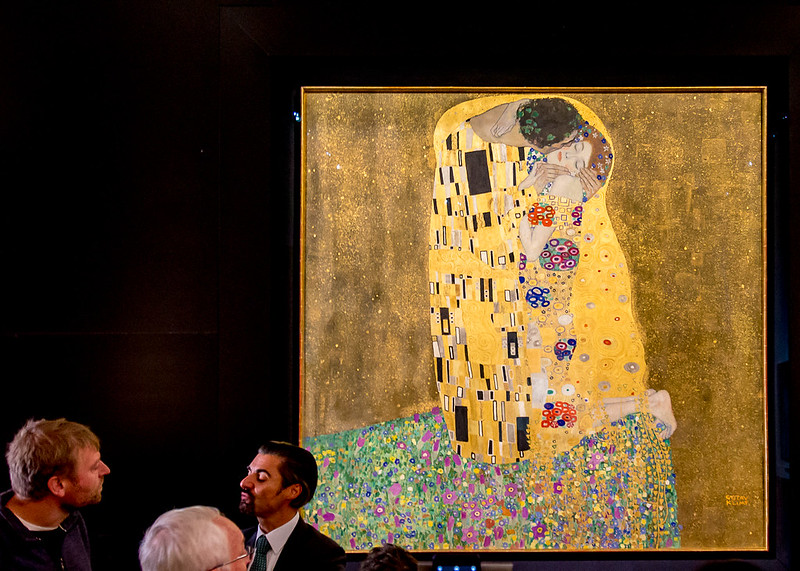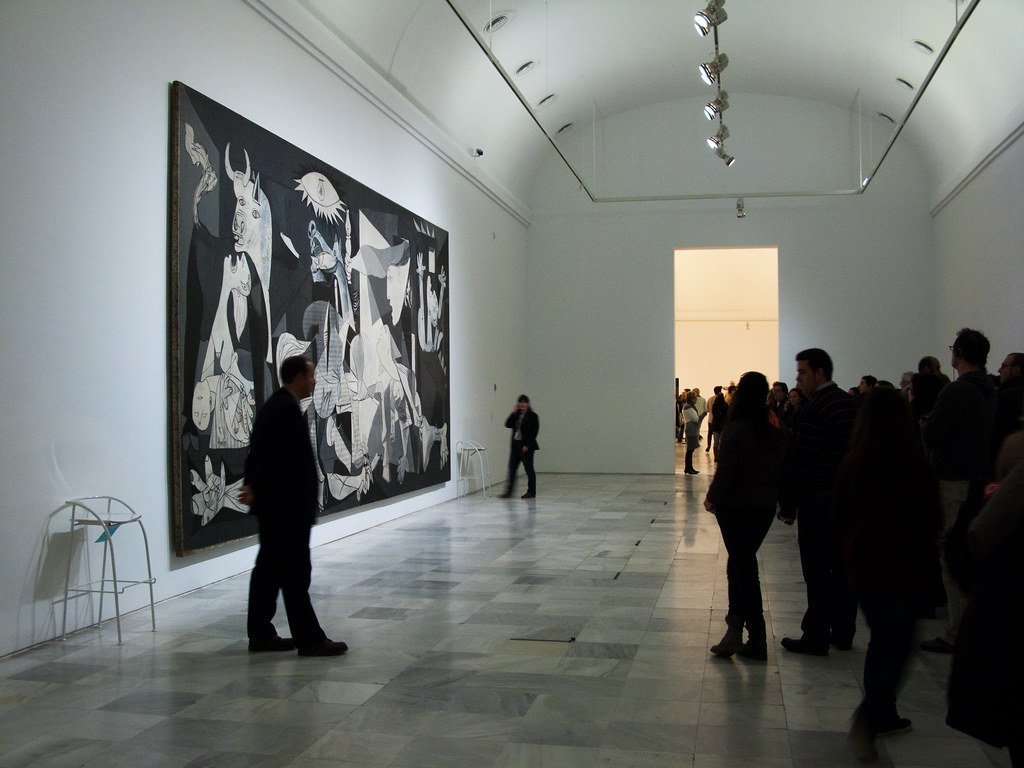Great art comes in all shapes and sizes. From towering sculptures to tiny sketches, artists have produced works that play with scale throughout the history of art. While this interest in experimentation is apparent across mediums and genres, its role in painting has been particularly big—literally.
Here, we take a look at some of the most famous large-scale canvas paintings, from Botticelli’s mythological masterpiece to Pollock’s avant-garde “action painting.”
Take a tour of 10 large-scale canvas paintings from art history.
The Birth of Venus (c. 1483–1485) by Sandro Botticelli — 5′ 8″ x 9′ 2″

Sandro Botticelli, “The Birth of Venus,” c. 1483–1485 (Photo: Wikimedia Commons, Public domain)
Created between 1482 and 1485, The Birth of Venus is among Sandro Botticelli’s most well-known works, and one of the most famous Renaissance paintings. The monumental, mythological painting depicts Venus, the Roman goddess of love and beauty, as she emerges from the sea in her signature scallop shell.
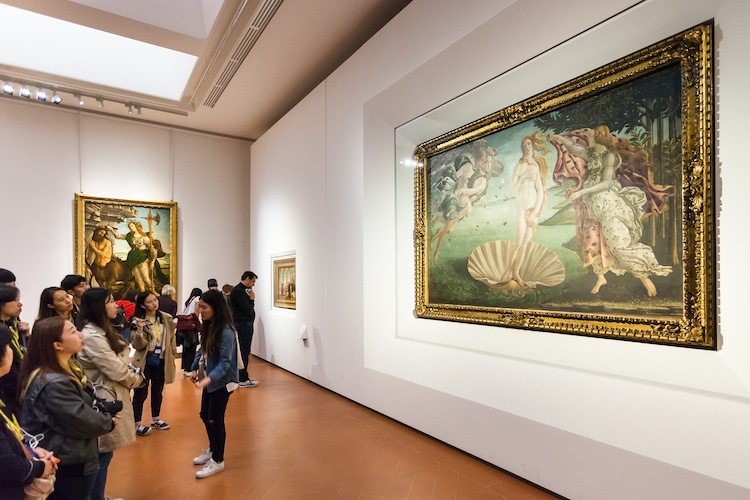
Tourists in the Botticelli Room of the Uffizi Gallery (Photo: Stock Photos from vvoe/Shutterstock)
In addition to its mythology-based subject matter—a genre of iconography that Renaissance artists did not typically explore—the painting is renowned for its vibrant color palette, delicate brushwork, and, of course, its scale: 5′ 8″ x 9′ 2″.
The Night Watch (1642) by Rembrandt Harmenszoon van Rijn— 11′ 11″ x 14′ 4″
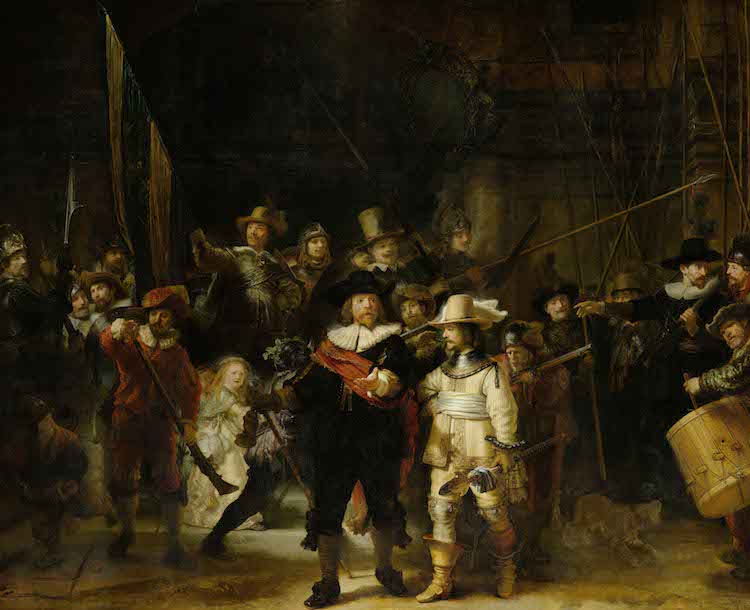
Rembrandt, “The Night Watch,” 1642 (Photo: The Rijks Museum via Wikimedia Commons, Public domain)
As one of the most important Old Masters, Rembrandt’s oeuvre features a comprehensive collection of celebrated paintings, prints, and drawings. Still, Militia Company of District II under the Command of Captain Frans Banninck Cocq—better known as The Night Watch—remains his most important work of art.
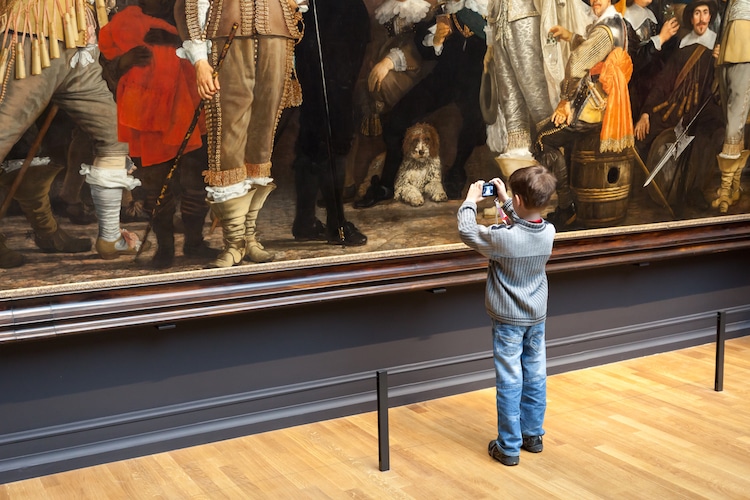
Young admirer of the famous painting, “The Night Watch” (Photo: Stock Photos from Luboslay Tiles/Shutterstock)
Measuring 11′ 11″ x 14′ 4″ and depicting a militia, this piece showcases both Rembrandt’s theatrical treatment of light and his well-known preference for portraiture on a grand scale.
Las Meninas (1656–1657) by Diego Velázquez — 10′ 5″ x 9′ 1″
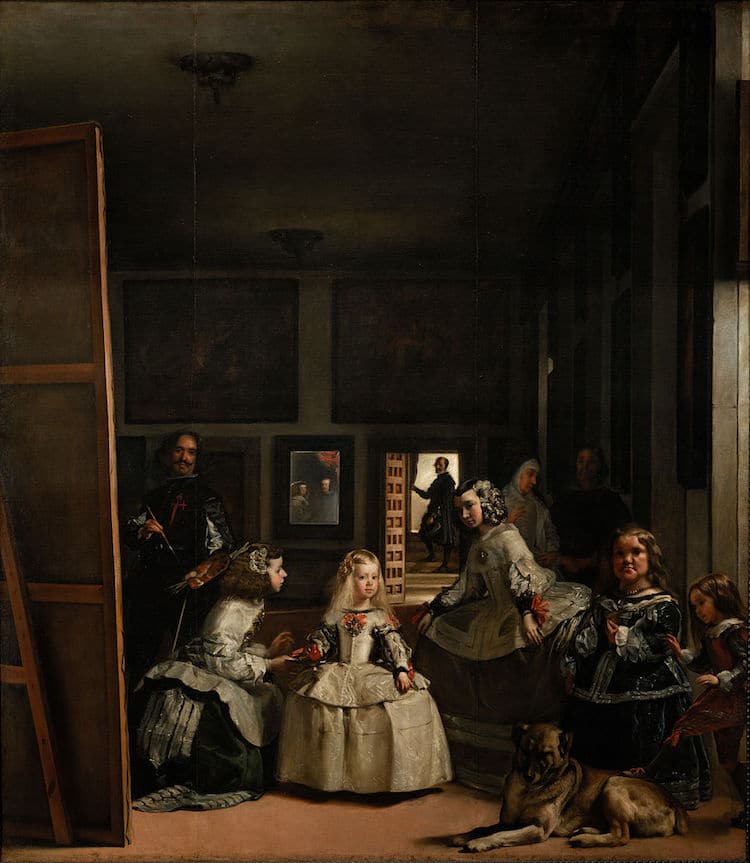
Diego Velázquez, “Las Meninas,” 1656–7. (Photo: Museo del Prado via Wikimedia Commons, Public domain)
Spanish artist Diego Velázquez was the court painter for King Philip IV and known for his expressive portraits which captured the physical likeness and personality of his subjects. Las Meninas is his most revered work that is still lauded by art historians today for its complex design. It shows the infanta Margaret Theresa surrounded by ladies in waiting, a chaperone, a bodyguard, a chamberlain, and even Velázquez himself.
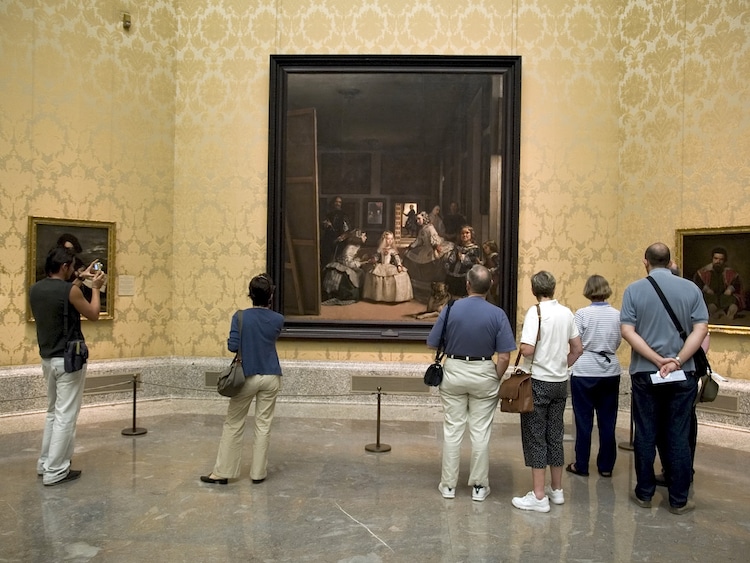
Photo: rubiphoto/Depositphotos
The numerous figures are artfully arranged in the 10′ 5″ x 9′ 1″ canvas.
Liberty Leading the People (1830) by Eugène Delacroix — 8′ 6″ x 10′ 8″
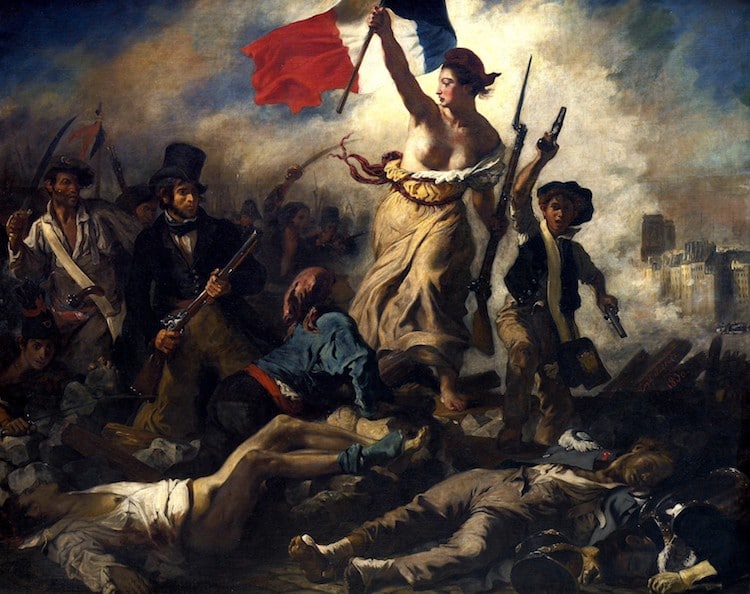
Eugène Delacroix, “Liberty Leading the People,” 1830 (Photo: 1st-Art-Gallery via Wikimedia Commons, Public domain)
French painter Eugène Delacroix created Liberty Leading the People in 1830. Inspired by the Second French Revolution, Delacroix painted the piece to commemorate the toppling of the king.
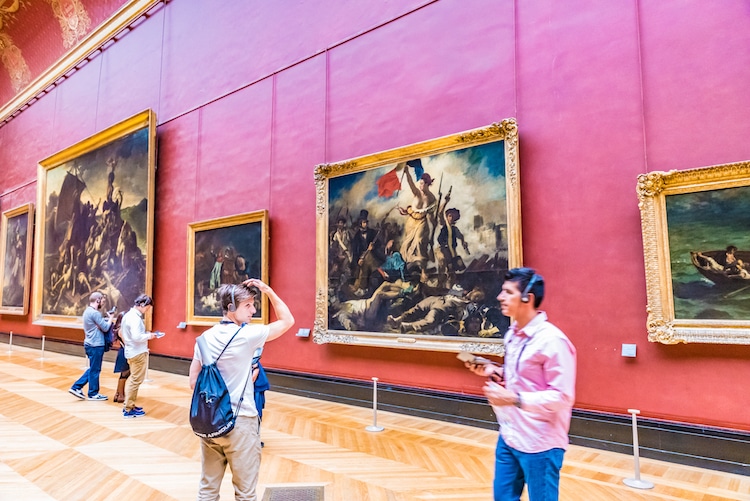
People in the Louvre (Photo: Stock Photos from Takashi Images/Shutterstock)
At 8′ 6″ x 10′ 8″, the colossal piece features in-your-face iconography and symbolic motifs that make a powerful statement. “I have started work on a modern subject, a scene on the barricades,” the artist wrote while painting Liberty Leading the People. “I may not have fought for my country but at least I shall have painted for her.”
Le Déjeuner sur l'herbe (1863) by Édouard Manet — 6′ 10″ x 8′ 8″
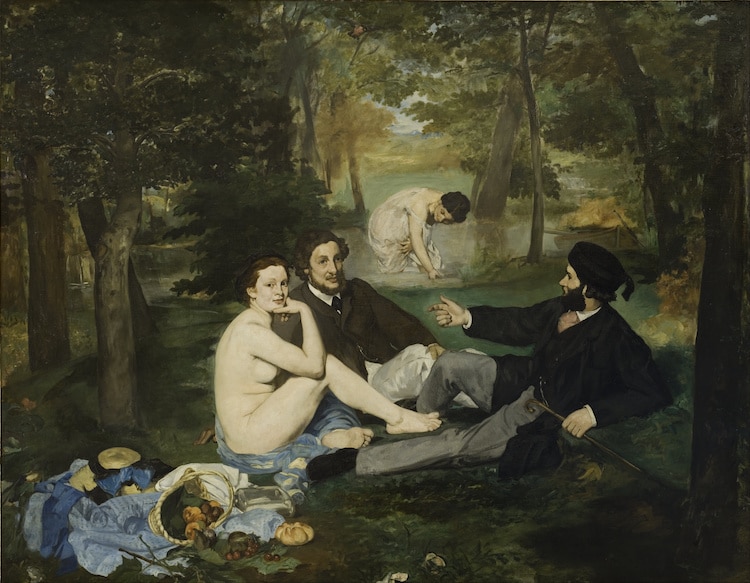
Édouard Manet, “Le Déjeuner sur l’herbe,” 1863. (Photo: Musée d'Orsay via Wikimedia Commons, Public domain)
Manet’s large-scale masterpiece, Le Déjeuner sur l’herbe (or The Luncheon on the Grass), bridges the gap between the Realist and Impressionist art movements with its modern approach to style and subject matter. Featuring a nude woman picnicking in the company of two well-dressed men, it derives inspiration from Classical paintings of female nudes while placing it in a contemporary setting.
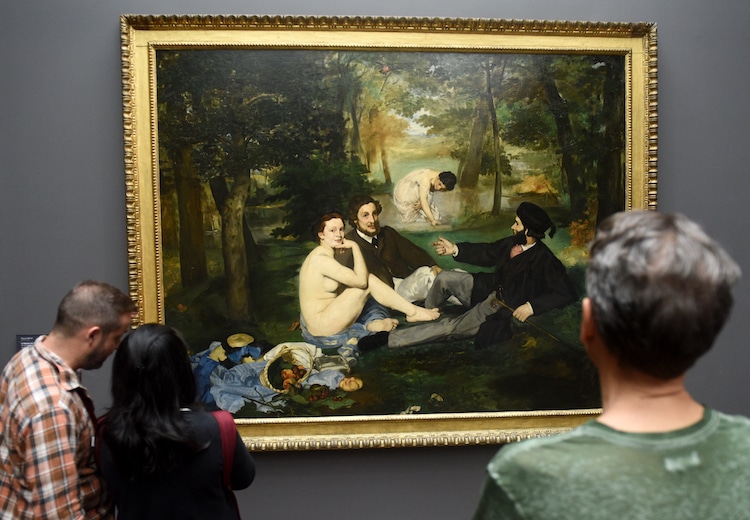
Photo: Bumble-Dee/Depositphotos
Manet emphasizes the subject matter by painting the provocative scene on a large 6′ 10″ x 8′ 8″ canvas. Today, the piece is a highlight of the Musée d’Orsay.
A Sunday Afternoon on the Island of La Grande Jatte (1884–1886) by Georges Seurat — 7′ x 10′

Georges Seurat, “A Sunday Afternoon on the Island of La Grande Jatte,” 1884-1886 (Photo: Art Institute of Chicago via Wikimedia Commons, Public domain)
A Sunday Afternoon on the Island of La Grande Jatte was painted by Georges Seurat, a pioneer of Pointillism, in the 1880s. To create the large-plan piece, Seurat meticulously applied millions of hand-painted dots to the 7′ x 10′ canvas.
In addition to the monumental, final piece, Seurat created smaller studies. In each case, the composition remains relatively untouched; the appearance, number, and positioning of the patrons, however, changes from sketch to sketch.
The Kiss (1907–1908) by Gustav Klimt — 5′ 11″ x 5′ 11″
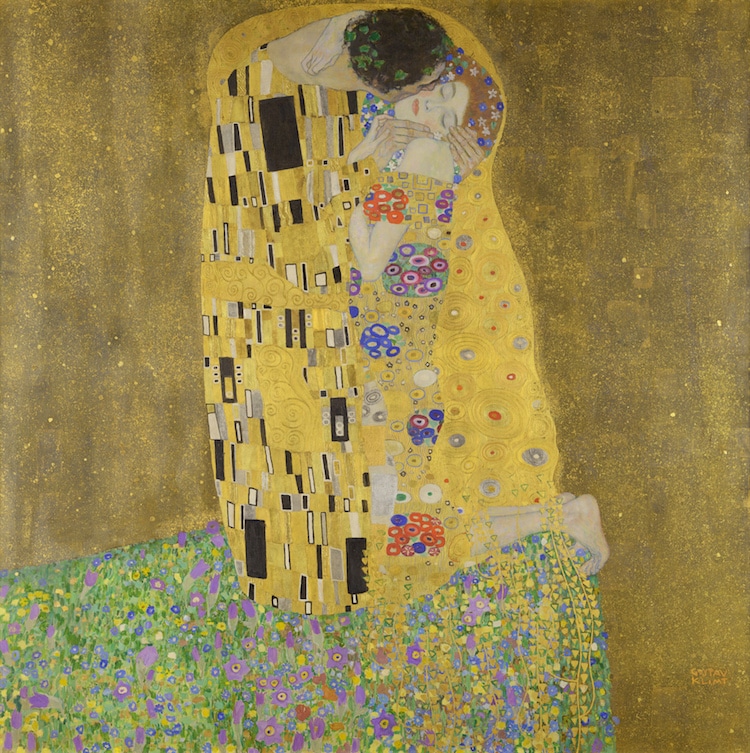
Gustav Klimt, “The Kiss,” 1907–1908 (Photo: Google Art Project via Wikimedia Commons, Public domain)
In 1908, Symbolist painter Gustav Klimt painted The Kiss, a glimmering painting of an ethereal embrace. This piece was created during the artist’s Golden Phase, a phase characterized by an abundance of gold leaf. While Klimt created many glistening works during this time, The Kiss has resonated most strongly due to its sentimental subject matter and dreamy atmosphere.
At 5′ 11″ x 5′ 11″, however, this piece is nowhere near Klimt's largest; that honor goes to his murals, including his 112-foot-tall Beethoven Frieze.
The Water Lilies Series (c. 1915–1926) by Claude Monet — almost 300 feet in total
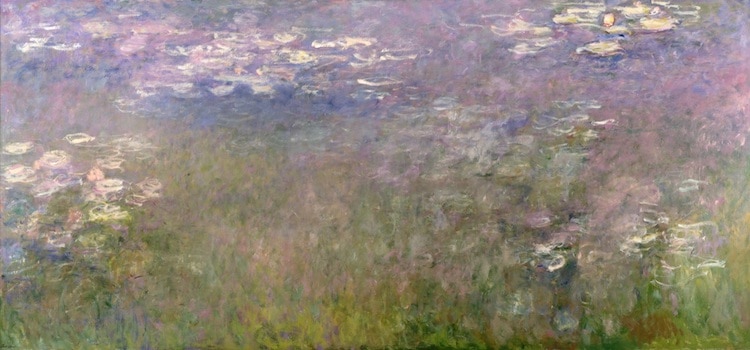
Claude Monet, “Water Lilies,” c. 1915-1926 (Photo: The Nelson-Atkins Museum of Art via Wikimedia Commons , Public domain)
Impressionist artist Claude Monet lived in Giverny, a commune in Northern France, from 1883 until his death 43 years later. Surrounded by the beauty of his Japanese-inspired gardens—which he described as his “most beautiful masterpiece”—Monet frequently featured water lilies as his subjects.
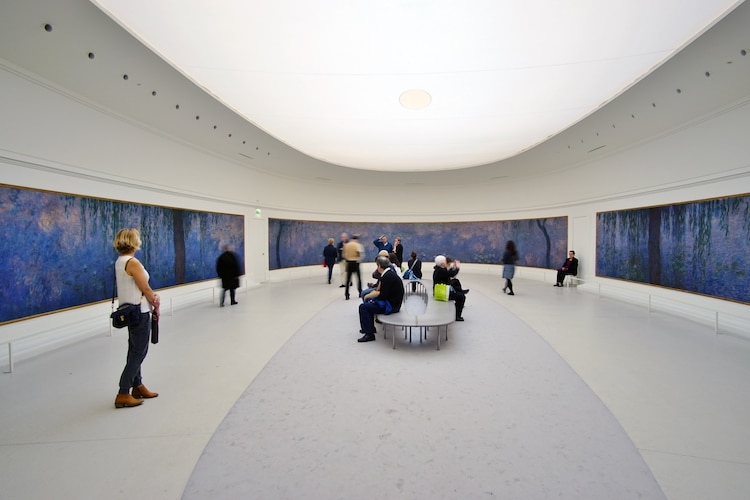
The Musée de l’Orangerie museum in Paris (Photo: Stock Photos from EQRoy/Shutterstock)
Of the roughly 250 oil paintings he painted of these aquatic flowers, the most famous—and largest—pieces are housed in Paris' Musée de l'Orangerie. If placed side-by-side, the curved canvases in this collection would measure nearly 300 feet!
Guernica (1937) by Pablo Picasso— 11′ 6″ x 25′ 6″
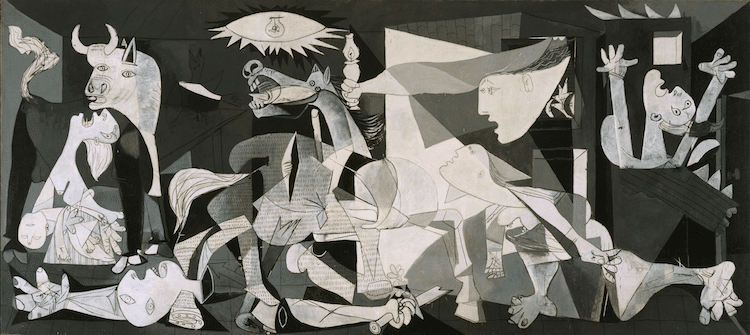
Pablo Picasso, “Guernica,” 1937 (Photo: xennex via Wiki Art, Fair Use)
In 1937, Picasso painted Guernica, a black-and-white painting illustrating the devastating effects of the Spanish Civil War. The chaotic scene features several figures—with a grieving mother, a gored horse, and a looming bull among the most prominent—in the aftermath of the bombings carried out by Nazi and Fascist Italian warplanes.
While perceptions of the painting’s symbolism vary, it is universally understood to be an anti-war art piece, meaning that—at 11′ 6″ x 25′ 6″— it is monumental in both scale and message.
Number 1, 1950 (Lavender Mist) (1950) by Jackson Pollock — 7 ‘ 3″ x 9' 10″
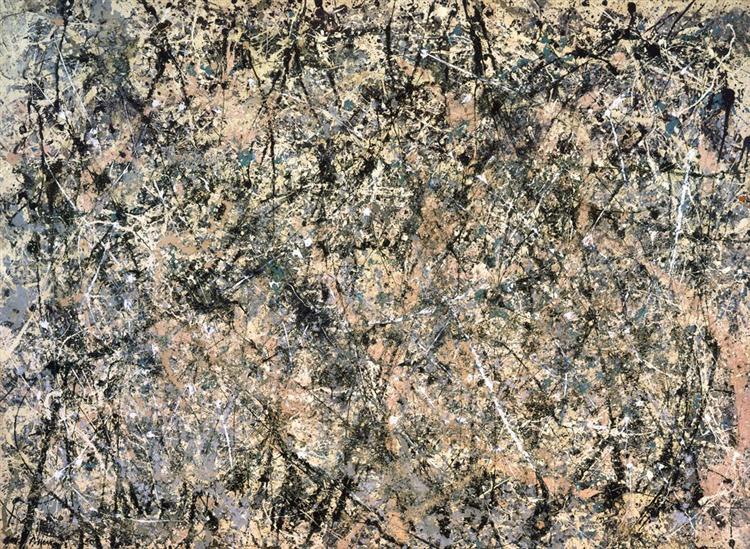
“Number 1 (Lavender Mist)” by Jackson Pollock (1950) (Photo: xennex via Wiki Art Fair Use)
Abstract Expressionist Jackson Pollock painted Number 1, 1950 (Lavender Mist), a painting that measures 7 ‘ 3″ x 9' 10″. Like his other mural-sized masterpieces. this piece was created using his signature “action painting” technique. Rather than prop primed canvases on easels and produce his art with brushes, he opted to pour, spray, and splatter paint onto raw canvas he placed on the ground.
“On the floor I am more at ease,” he explained. “I feel nearer, more part of the painting, since this way I can walk around it, work from the four sides and literally be in the painting.”
Frequently Asked Questions
What is considered a large-scale painting?
A large-scale painting refers to a work of art that is massive in size. More than just big, large-scale paintings are often overwhelming due to their sheer grandeur, making their size a part of each piece’s allure. It is common for a large-scale painting to be referred to as “larger than life.”
What is the largest painting in the world?
The largest canvas painting in the world—according to the Guinness World Record as of September 29, 2020—is The Journey of Humanity (2020) by Sacha Jafri. It is a little over 17,000 square feet and sold for $62 million at auction.
This article has been edited and updated.
Related Articles:
How Van Gogh’s ‘The Starry Night’ Came to Be and Continues to Inspire Artists
How Flowers Blossomed Into One of Art History’s Most Popular Subjects
The Stories and Symbolism Behind 5 of Frida Kahlo’s Most Well-Known Paintings

